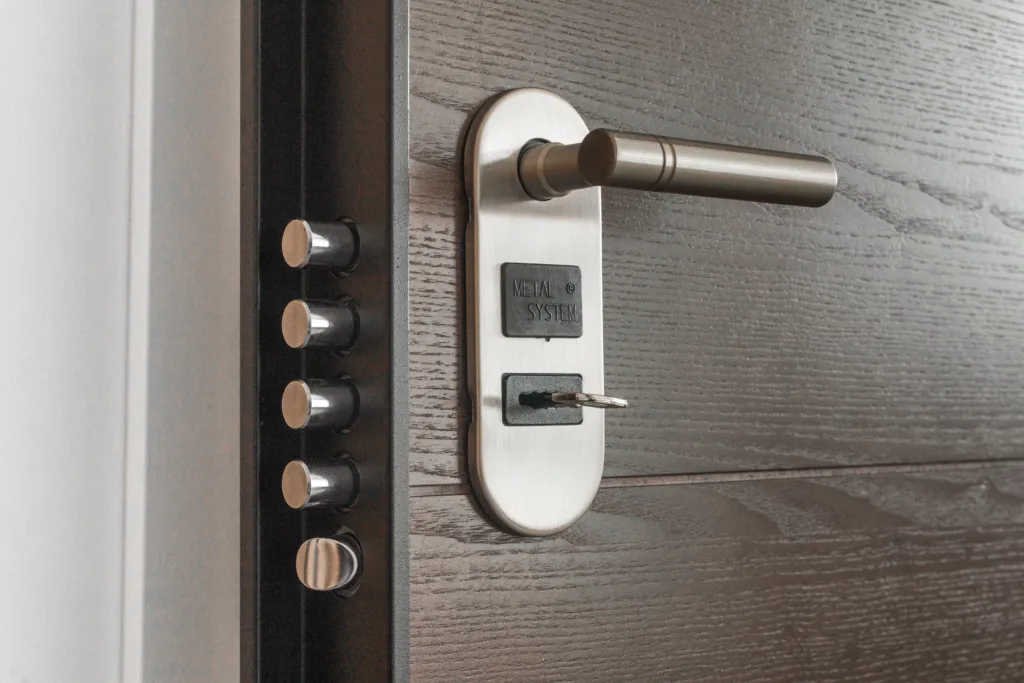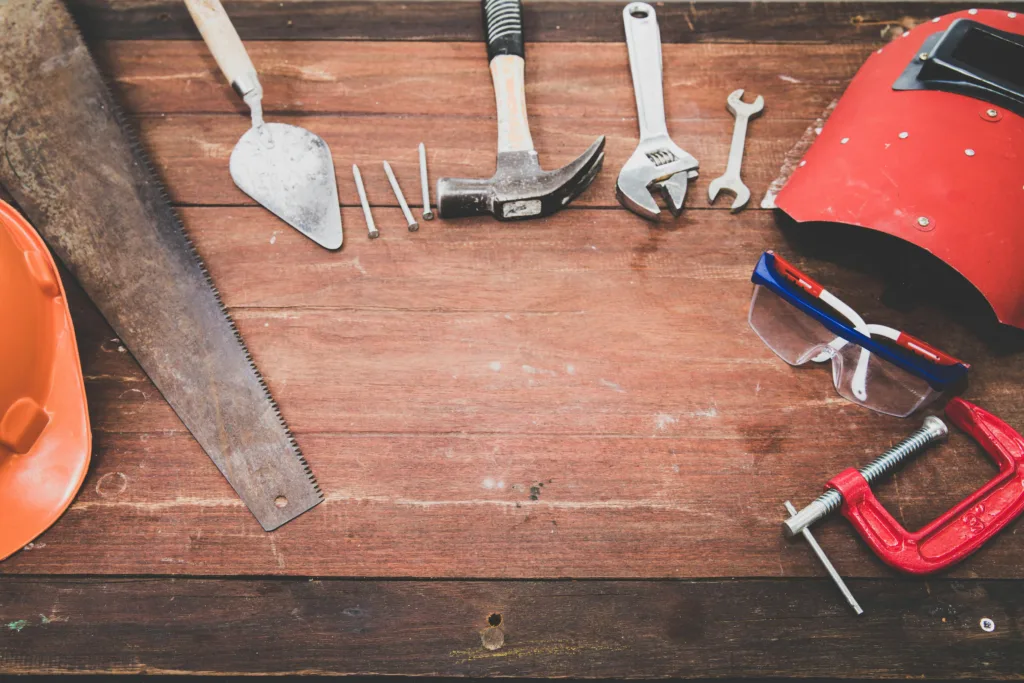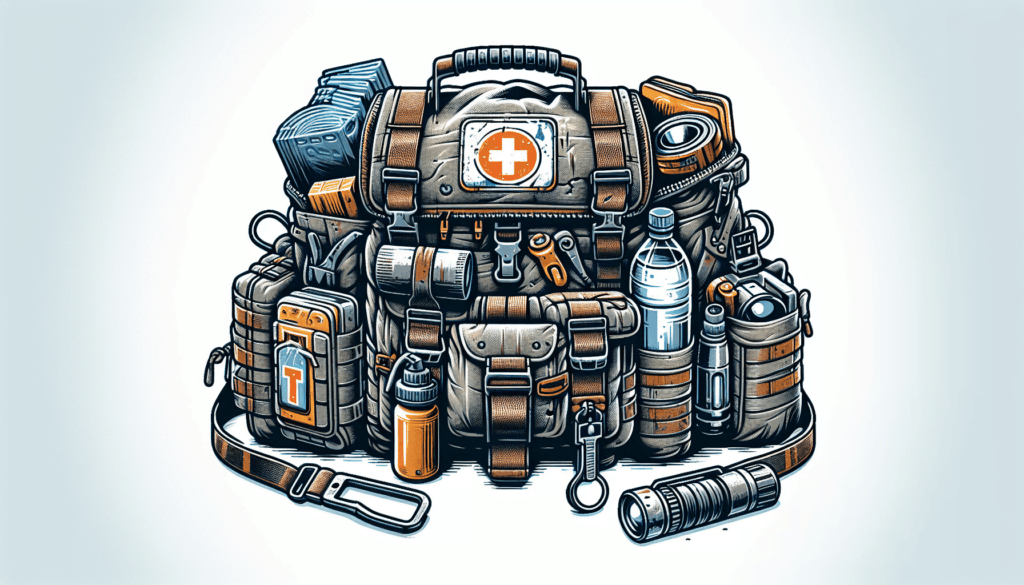In an unpredictable world, it is imperative that we take proactive steps to protect our loved ones, especially the most vulnerable ones – our children. With the increasing frequency and intensity of natural disasters, it becomes crucial to ensure that our homes are childproofed against these unexpected events. From earthquakes to hurricanes, this article will guide you through the necessary measures and precautions you can take to safeguard your home against natural disasters, providing you with peace of mind and ensuring the safety of your children.
Table of Contents
How To Childproof Your Home Against Natural Disasters

Preparing Your Home
Natural disasters can strike at any time, and it is crucial to take the necessary steps to prepare your home for such events. By assessing the risks specific to your region, securing heavy furniture, and bolstering structural integrity, you can minimize potential damage and ensure the safety of your family.
Assessing the Risks
To effectively prepare your home for natural disasters, it is essential to assess the risks associated with your geographical location. Research the common types of disasters in your area, whether it be earthquakes, hurricanes, tornadoes, floods, wildfires, or other events. Understanding the risks will allow you to take appropriate measures to safeguard against them.
Securing Heavy Furniture
One of the most critical steps in preparing your home is securing heavy furniture. During earthquakes or strong winds, unsecured furniture can become dangerous projectiles, risking injury to your family members. Anchor large appliances, bookshelves, and cabinets to the wall to prevent them from toppling over.
Bolstering Structural Integrity
Another vital aspect of preparing your home is bolstering its structural integrity. Consult with a professional architect or engineer to assess the stability of your house. Reinforce weak areas such as foundations, walls, and roofs to ensure they can withstand the force of natural disasters. Taking these precautionary measures will greatly increase your home’s ability to withstand damaging events.
Creating Emergency Kits
In times of natural disasters, having well-prepared emergency kits can be a lifesaver. By assembling a first aid kit, preparing a go-bag, and stocking up on essential supplies, you can be ready to face any adversity that comes your way.
Assembling a First Aid Kit
A comprehensive first aid kit is a crucial component of your emergency preparedness. Include essentials such as bandages, antiseptic solutions, pain relievers, and medical equipment. It’s also essential to regularly check and replenish the supplies in your first aid kit to ensure their effectiveness.
Preparing a Go-Bag
A go-bag is a portable kit that contains essential items you may need to survive for a few days in case of an emergency evacuation. Pack non-perishable food, bottled water, spare clothing, flashlights, batteries, and any necessary medications. Keep the go-bag in an easily accessible location and stay updated on the contents to ensure that they remain relevant.
Stocking Up on Supplies
Ensure that you have an ample supply of essential items like food, water, and prescription medications at home. Non-perishable food items such as canned goods and dried fruits can be stored for an extended period. Make a list of items that need to be replenished regularly, and maintain a well-stocked inventory to sustain your family in the event of a disaster.
Protecting Against Earthquakes
Living in an earthquake-prone area requires specific precautions to protect your home and family. By securing loose items, anchoring appliances, and reinforcing doors and windows, you can minimize the risks associated with earthquakes.
Securing Loose Items
Unsecured items within your home can cause significant harm during an earthquake. Secure items such as vases, picture frames, and mirrors to prevent them from falling and causing injuries. Use hooks, straps, or putty to fasten them securely.
Anchoring Appliances
Large appliances such as refrigerators, washers, and dryers can become hazardous during an earthquake if not properly secured. Attach anchoring devices to the appliances and secure them to the walls or floors. This will prevent them from toppling over or moving during seismic activity.
Reinforcing Doors and Windows
During an earthquake, doors and windows can shatter, leading to potential injuries from flying or broken glass. Strengthen doors and windows with shatter-resistant films or cover them with plywood to prevent breakage. Adding bolts or latches can also help keep them securely closed during an earthquake.
Guarding Against Hurricanes
Living in coastal regions or hurricane-prone areas requires specific measures to protect your home against these powerful storms. By installing storm shutters, reinforcing the roof and garage doors, and clearing the yard, you can enhance your home’s resilience against hurricanes.
Installing Storm Shutters
Storm shutters are an effective defense against hurricane-force winds and flying debris. Consider installing storm shutters made of durable materials, such as metal or impact-resistant glass, to safeguard your windows. Ensure that the shutters are properly maintained and can be easily closed when a hurricane warning is issued.
Reinforcing Roof and Garage Doors
During hurricanes, strong winds can cause severe damage to your home’s roof and garage doors. Reinforce your roof with hurricane straps or clips, which will help anchor it securely to the walls. Additionally, reinforce garage doors with sturdy bracing or install a hurricane-resistant door to prevent them from collapsing under the high winds.
Clearing the Yard
Before a hurricane strikes, make sure to clear your yard of any potential projectiles. Secure outdoor furniture, grills, and other loose items that could potentially be lifted and thrown by hurricane-force winds. Trimming trees and removing dead branches can also reduce the risk of falling debris.

Preparing for Tornadoes
Tornadoes can be sudden and destructive, and being prepared is crucial for ensuring the safety of your family. By designating a safe room, strengthening doors and windows, and securing outdoor structures, you can minimize the risks associated with tornadoes.
Designating a Safe Room
Identify a tornado-safe room in your home where your family can seek shelter during severe storms. Basements or interior rooms on the ground floor, away from windows, provide the best protection. Reinforce the safe room with sturdy materials and have emergency supplies readily available.
Strengthening Doors and Windows
Tornadoes can generate powerful winds that can damage or blow out doors and windows. Strengthen vulnerable areas of your home by using impact-resistant doors and windows or installing storm shutters. Reinforce doors with solid wood or metal frames and install deadbolt locks to secure them.
Securing Outdoor Structures
Outdoor structures such as sheds, gazebos, and playsets can become hazards during tornadoes if not properly secured. Anchor structures firmly to the ground using ground anchors or concrete footings. Regularly inspect and maintain outdoor structures to ensure their stability and minimize potential risks.
Defending Against Floods
Flooding can cause significant damage to your home and pose serious risks to your family’s safety. By elevating important belongings, sealing basements and crawl spaces, and creating flood barriers, you can minimize the impact of flooding.
Elevating Important Belongings
To protect your valuable possessions from flood damage, elevate them above potential flood levels. Move electronics, furniture, and other valuable items to higher floors or raise them on sturdy platforms. This preventive measure will help ensure that essential items remain safe and usable during and after a flood.
Sealing Basements and Crawl Spaces
Basements and crawl spaces are particularly vulnerable to flooding. Seal any cracks or foundation leaks to prevent water from entering these areas. Consider installing a sump pump and ensure it is in working condition to prevent excessive water buildup. Apply waterproof coatings or sealants to the walls and floors of basements and crawl spaces to provide an additional layer of protection.
Creating Flood Barriers
Creating barriers to divert or stop floodwaters can help protect your property. Sandbags can be a useful tool in creating temporary barriers. Place sandbags strategically around the perimeter of your home, focusing on potential entry points, such as doors and windows. Additionally, consider using flood-resistant materials for landscaping and construction to minimize the impact of flooding.

Shielding Against Wildfires
In areas prone to wildfires, taking preventive measures is crucial to protect your home and family. By clearing vegetation around the house, using fire-resistant materials, and creating an evacuation plan, you can reduce the risks associated with wildfires.
Clearing Vegetation Around the House
Maintaining defensible space around your home is essential in protecting it from wildfires. Clear vegetation, dry leaves, and debris at least 30 feet away from your house. Trim tree branches that overhang your property and remove any dead or dying plants, as they can easily catch fire.
Using Fire-Resistant Materials
Building or renovating your home with fire-resistant materials can significantly enhance its resistance to wildfires. Choose materials such as metal, brick, stucco, or cement that are less likely to catch fire. Install fire-resistant roofing materials to prevent ember penetration.
Creating an Evacuation Plan
Having a well-defined evacuation plan is crucial in wildfire-prone areas. Identify evacuation routes in advance and establish a meeting point for your family. Pack essential items, including important documents, medications, and emergency supplies, in a go-bag for easy access during evacuations. Stay informed about wildfire conditions and follow instructions from local authorities to ensure a safe and orderly evacuation.
Protecting Children During Natural Disasters
Children are especially vulnerable during natural disasters, and taking steps to protect them is of utmost importance. By educating them about emergency procedures, establishing communication plans, and conducting practice drills, you can help ensure their safety and well-being.
Educating About Emergency Procedures
Teaching children about emergency procedures is essential to ensure they know how to react and stay safe during natural disasters. Explain the appropriate actions to take during different types of emergencies, such as earthquakes, hurricanes, or tornadoes. Teach them how to dial emergency numbers, locate emergency exits, and identify safe areas in your home or community.
Establishing Communication Plans
Establishing communication plans is crucial in ensuring the safety of your children during natural disasters. Teach them how to use emergency communication devices, such as two-way radios or cell phones, to reach out to family members or emergency services. Designate a trusted relative or neighbor as an emergency contact point in case immediate family members are separated.
Conducting Practice Drills
Regularly conducting practice drills can help children familiarize themselves with emergency procedures and reduce anxiety during natural disasters. Practice evacuations, taking shelter, and implementing safety protocols. Make the drills age-appropriate and reinforce the importance of remaining calm and following instructions.

Utilizing Technology and Early Warnings
Advancements in technology provide valuable tools for early detection and warning of natural disasters. By installing smoke detectors and alarms, registering for emergency alerts, and downloading safety apps, you can enhance your preparedness and response.
Installing Smoke Detectors and Alarms
Smoke detectors and alarms are critical in detecting fires and providing early warnings, allowing you and your family to escape safely. Install smoke detectors on each level of your home, including inside bedrooms and outside sleeping areas. Test and replace batteries regularly to ensure their functionality.
Registering for Emergency Alerts
Registering for emergency alerts through local authorities or national alert systems is a proactive step in staying informed during natural disasters. Receive notifications about severe weather, evacuation orders, or other critical information directly to your mobile device or email. Stay connected to reliable news sources to receive the latest updates and instructions.
Downloading Safety Apps
In addition to official emergency alerts, various safety apps can provide valuable information and assistance during natural disasters. Download apps that offer real-time weather updates, disaster preparedness tips, and emergency contact information. These apps can also include features such as GPS locators and emergency messaging systems, further enhancing your overall preparedness.
Seeking Professional Help
While many steps can be taken by homeowners themselves, seeking professional help can provide additional expertise and peace of mind. By consulting with an architect or engineer, hiring a professional home inspector, and engaging with local disaster preparedness organizations, you can ensure optimal safety measures for your home and family.
Consulting with an Architect or Engineer
Consulting with an architect or engineer can provide valuable insights into fortifying your home against natural disasters. Their expertise can identify potential weak points and recommend specific measures to reinforce structural integrity. They can also guide you on building or renovation projects to ensure adherence to safety standards and codes.
Hiring a Professional Home Inspector
A professional home inspector can conduct a thorough assessment of your home’s vulnerability to natural disasters. They can identify current safety risks and suggest appropriate mitigation strategies. Regular inspections can help identify maintenance issues and ensure that safety measures remain effective over time.
Engaging with Local Disaster Preparedness Organizations
Engaging with local disaster preparedness organizations can provide valuable resources and support networks. These organizations often offer workshops, training, and information sessions on disaster preparedness specific to your area. Stay connected with these organizations to stay informed about the latest safety measures and community-wide emergency plans.
In conclusion, protecting your home against natural disasters requires careful planning and preparation. By following the outlined steps, including assessing risks, creating emergency kits, implementing protective measures, and seeking professional help when needed, you can minimize the potential impact of natural disasters on your home and family. Remember to stay informed, practice emergency procedures, and remain vigilant for any updates or warnings from local authorities. With a well-prepared and resilient home, you can face natural disasters with confidence and prioritize the safety and well-being of your loved ones.

Related site – Childproofing Your Home

